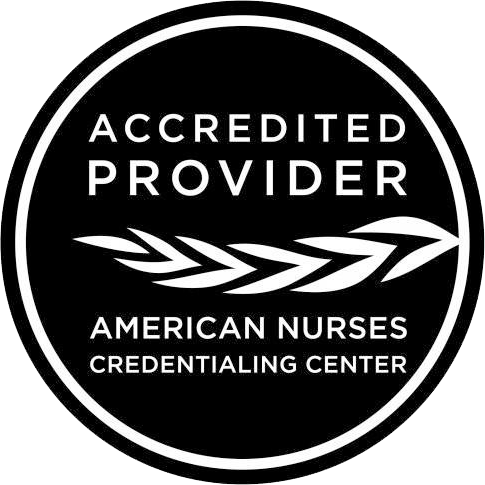
The Intersection of Adolescence Substance Use and Abuse
-
Register
- User - $40
Alcohol, marijuana, and tobacco are substances most commonly used by adolescents. Substance use in adolescence becomes risky, when does substance use become substance abuse?
This presentation will focus on adolescent substance use and abuse. This presentation will also focus on the most commonly abused substances during adolescence, factors that contribute to substance abuse and treatment plans.
Credits: 1.50 contact hours; 1.50 are pharmacology
Expiration Date: December 31st, 2025
$40
LEARNING OBJECTIVES
After taking part in this educational activity, participants should be better able to:
-Identify the prevalence of substance use disorders among adolescents-Describe the substances common abused by adolescents and the impact of these substances.
-Identify evidence supporting treatment plans and describe treatment plans for adolescents with substance use disorders

Charitta Ernewein, PhD, DNP, APRN, FNP-C, SANE-A
Assistant Professor, family nurse practitioner
University of Tampa, Crisis Center of Tampa Bay as a Sexual Assault Nurse Examiner
Charrita Ernewein, PhD, DNP, APRN, FNP-C, SANE-A is a family nurse practitioner and specializes in pediatrics. She is an Assistant Professor at The University of Tampa and works for the Crisis Center of Tampa Bay as a Sexual Assault Nurse Examiner. Dr. Ernewein completed her Bachelor of Science in Nursing at Marquette University in Milwaukee, Wisconsin in 1988, her Master of Science at South University in 2013 and her Doctoral Nurse Practitioner in 2016 at South University in Tampa, Florida, and her PhD at University of Central Florida in 2021. Dr. Ernewein holds a national certification with the American Academy of Nurse Practitioners and a certification as a Sexual Assault Nurse Examiner.
Dr. Ernewein is a strong advocate within the community working closely with professional organizations and community resources regarding the topics of human trafficking and vulnerable populations. Dr. Ernewein id the Director of Community education with The FREE Network. She is also published in the Journal of Nurse Practitioners, Human Trafficking: Recognition, Referral and Treatment. Her dissertation focused on “Survivors of Human Trafficking and their Reintegration into the Community”.
Dr. Ernewein is the President of the Tampa Bay Advanced Practice Nurse Council Group, a member of American Academy of Nurse Practitioner, a member of the Black Nurses Association, and a member of the National Association of School Nurses.
CE INFORMATION
Obtain Your Credits
To earn credits for this activity, navigate to the Content(s) tab and complete all course components in the following order: 1) watch the course presentation video; 2) complete the course evaluation; 3) pass the post-test with a score of 2/3 (66.7%) or higher. You may retake the post-test until a passing score is achieved, at which point you will be able to view/print a copy of your certificate of completion. This online certificate will also be saved within your profile 'My Dashboard' -> 'Transcript/Certificates Earned' for future access.
Designation Statement
NPACE designates this educational activity for a maximum of 1.50 contact hours, of which 1.50 is pharmacology credit. Participants should claim only credit commensurate with the extent of their participation in the activity.
Accreditation Statement
Nurse Practitioner Associates for Continuing Education (NPACE) is accredited as a provider of nursing continuing professional development by the American Nurses Credentialing Center’s Commission on Accreditation (ANCC).
In addition to ANCC, NPACE is approved as a provider of continuing education in nursing by: the California Board of Registered Nursing, Provider Number CEP8720 and Florida CE Broker #50-1476.
DISCLOSURES
Faculty
Contributing faculty, Charrita Ernewein, PhD, DNP, APRN, FNP-C, SANE-A have disclosed have disclosed no relevant financial relationship.
Planners
All planners and contributors involved in this educational activity have disclosed no relevant financial relationships.
Disclaimer
The material presented in this continuing education program is being made available for educational purposes only and is not intended to represent the best or only methods, medications and/or guidelines appropriate for the medical situation discussed. Rather the material is intended to present an approach, view, statement, or opinion of the presenter(s), which may be helpful, or of interest to other practitioners and should not be used by clinicians without the evaluation of their patient’s conditions and possible contraindications on dangers in use, review of any applicable manufacturer’s product information, and comparison with recommendations of other authorities. NPACE disclaims any liability, loss, injury, or damage incurred as a consequence, directly or indirectly, of the use and application of any information given in a presentation.
Disclosure of Unlabeled Use
This educational activity may mention the uses of products that are not approved by the FDA for the indication(s) being discussed. The presenter(s) are instructed to notify participants when they are discussing unapproved uses or investigational agents. The opinions related to unapproved uses of products are solely those of the presenter(s) and are not endorsed or recommended by NPACE. Please refer to the official prescribing information for each product for discussion of approved indications, contraindications, and warnings.
Commercial Support
There is no commercial support for this activity.

